Originally Published at ViceNews. June 5, 2014 1:00 PM
There’s an epidemic of PTSD in American cities, and it has nothing to do with the wars being fought abroad. Homegrown violence and a sense of impunity in America’s urban war zones are leaving thousands of teenagers with severe psychological trauma that stunts their emotional and cognitive development. VICE News travels to the front line of this epidemic in Los Angeles with the kids who are suffering, and the adults trying to save them from being destined for the fringes of society.
Meet the South Central LA School Counselor Who Helps Students Combat PTSD From Gang Violence
Manual Arts Senior High School is located on South Vermont Avenue in South Central Los Angeles. This neighborhood is located in an area that has a high rate of homicides that comes from gang-related violence.
As a result of growing up in this neighborhood, students at Manual Arts Senior High School often display high rates of post-traumatic stress disorder (PTSD) that impacts their ability to learn, function and have a “normal” high school experience.
Gustavo Sagredo is the school counselor at Manual Arts Senior High School. He is often the first and only point of contact to help students and families cope with the symptoms of PTSD that they experience.
Sagredo spoke with VICE News about his role at Manual Arts Senior High School and what his students face on a daily basis.
VICE News: Hi Gustavo. Can you start off by telling me about what your job is and how long you’ve been at Manual Arts?
Gustavo: I am a psychiatric social worker at Manual Arts High School and I’ve been at Manual for eight years. I provide counseling and mental health services for our students who are either in crisis or struggling with trauma or facing grief or losses.
VICE News: Can you talk about some of those struggles you see your students deal with at Manual that might be different from other high schools in the country?
Gustavo: One of the biggest challenges that our kids struggle with is just the exposure they see to violence in the community on a daily basis. Our students are not only exposed to violence but they’re victims to it. We’ve had multiple students who’ve had family members die or who are victims of violence or sexual abuse themselves.
VICE News: What specifically is going on in the area that Manual is located in?
Gustavo: We work and live in the South LA area and we have major gangs around Manual Arts High School and so as a result we have students witnessing gang violence. This is direct physical violence or they are just surrounded by it in the community.
This ranges from normal family dysfunction, exposure to domestic violence and just the day to day violence that our kids struggle with. Sometimes it doesn’t come out as direct violence but it is intimidation and comes from just being surrounded by it.
VICE News: How do students reach you for help? Do they get referred by someone inside or outside of school? Gustavo: I’ve been at Manual Arts for eight years, which means at some point I’ve had contact with most of the students in one way or another. Plus, I also teach health class, which is how I see most of my other students. I would say about 40 percent of the kids that come to me are self-referred meaning they come in themselves. The rest that are brought to my attention are from another counselor, teacher, or administrator in the school.
For example, if you have a student that got into a fight with another student and the student is overwhelmed at that moment a lot times when the counselor or administrator is talking to them they come to find out a sibling or parent has died. That’s how they come to my attention.
One of my roles as a psychiatric social worker is making our school a trauma-informed school. That means helping the student or teacher be aware of not what is wrong with them but what happened to cause them to be that way. Recognizing not only what trauma looks like but what the impact can be.
VICE News: Manuel Arts High School had two students killed just this past year from violence. Can you tell me more about this and what the circumstances of their deaths were?
Gustavo: One was murdered in November — who was a ninth grader and the other was a senior and killed this past March. They were both violent deaths. I can’t speak about the situation specifically or whether it was directed towards them because of direct gang involvement, but yes, they were both murdered violently.
When we talk about gang violence though, all of our kids are one way connected to someone in a gang, whether it’s a friend, a neighbor or family member. So the reality is that our kids are not buffered from it. You might not be in a gang but if you’re hanging out with people who are, the rival gang doesn’t give a shit. If you’re hanging out with them the other gang is not going to care.
VICE News: What was the reaction throughout the school and from students that you saw after they were killed?
Gustavo: You see that struggle that the kids have right after the death of their fellow students. The first two weeks we had students coming in to the office and self-report that they weren’t eating, not sleeping and having those type of challenges. Even though we live in a violent community in South LA, all too frequently students tend to normalize this behavior. But when it happens to a classmate or friend or family member it resonates that this could happen to them.
It should never have to get to that point. That’s the difficult thing. A lot of our kids are surrounded by it on a daily basis and so what I tell kids and families is that you don’t have to go outside the community to find it, they know where to find it. It’s at their front door.
For example, they just murdered an adult man 30 feet from my office outside the front of the school when I was talking to Brett (VICE News associate producer) a couple of months ago. There was no mention in the news, it was just another death in the community. The fact is that we do live in a violent community. It is very dangerous. Because it happens all too often people tend to normalize that behavior and tend to not be that cognizant because they see it as a way of life.
The school tries to prevent it as much as we can through backpack checks, random searches but there is only so much we can do.
VICE News: As a guidance counselor and mental health professional, can you tell me more about how you’ve seen student’s cognitive abilities impacted by the deaths of their classmates?
Gustavo: Some of the major things we see is the depression, anxiety and other symptoms of PTSD from students who are still trying to process these traumas and don’t know how to. But also as a whole, developmentally wise, when there is a trauma it can affect their ability to learn. I try to help them through that process. Because of the trauma, sometimes the student becomes less trusting of their environment and feel that they have less control over things in their life so it becomes difficult to read people, which leads students to react in ways that from the outside are hard to understand.
For instance, for a student who has been sexually assaulted, it impacts their ability to trust people close to them. For that student, they are no longer engaged, they have trouble reaching out, they isolate themselves further and further because of that trauma. That happens a lot with our students where their reactions aren’t always understandable but if you look deeper you realize there is trauma.
VICE News: Can you describe more some specific symptoms you’ve seen in students that you might attribute to PTSD and how it affects their learning?
Gustavo: General symptoms is the reoccurring trauma being played out in their lives, whether they’re thinking about it on a daily basis, having difficulty eating, having difficulty sleeping, feeling guilty as a result of that trauma. I get a lot of complaints from teachers that kids put their heads down on the desk in class, they’re not focused, forgetful, not paying attention.
VICE News: Can you speak about the shame that some students have expressed to you about describing their symptoms of grief? Why do you think this is?
Gustavo: It’s partly shame and it’s also that stigma that people hold about seeing someone. A lot of people have assumptions of what it means to speak to a mental health worker, whether it’s driven by the community or the family.
A lot of families or students feel guilty that they have to talk to me because they feel like they should be able to do it on their own. So my role is to break down that stigma and normalize that experience. When these families are going through these experiences it’s scary and having to disclose some of these issues and family issues can be difficult.
I can’t tell you how many family members come to me and say I don’t want anyone to know that I’m speaking with you or that my son is speaking with you. But the reality is that a lot of the families do want to talk.
VICE News: This might be a hard question to answer but considering that your students have already faced such difficult lives as a result of growing up in violent communities, how much do you feel you can do to help them? Or in other words, do you feel like you can exert a serious impact or has life pretty much already been decided for them?
Gustavo: Part of what my role is to begin that process with them because I only have them for four years and sometimes I only have them for a month or two. So part of my goal is to begin the work that can help them through a healthy and healing process and help them know what they have control over. They tend to blame themselves for the violence. I try to explain that it’s out there and how to deal with it and process it and that its not their fault.
Trauma is not a linear experience. It has its shifts. Sometimes we function in a healthy way but then something happens that brings you back to that dysfunction. I try to explain that
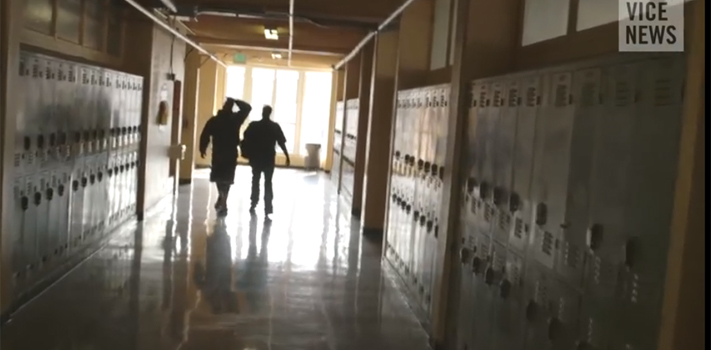
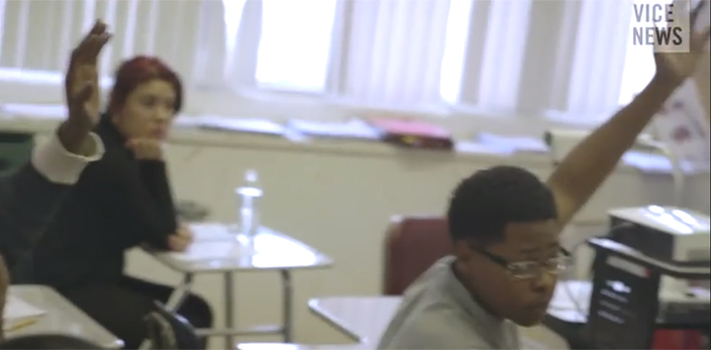







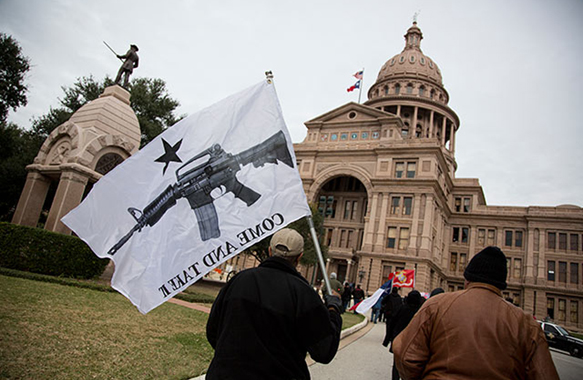
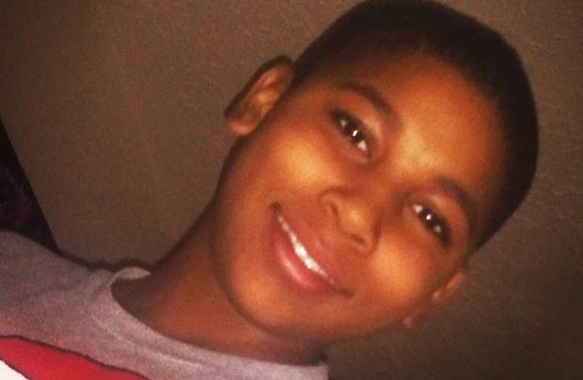
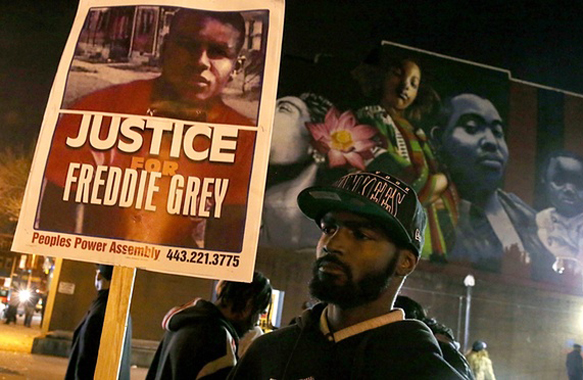
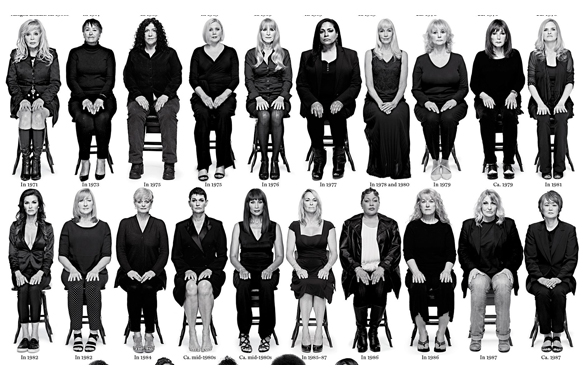

Leave A Comment